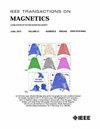Numerical Analysis of Partial Discharge With Lossy Multi-Dielectric Insulator Forming Migration–Ohmic Model
IF 2.1
3区 工程技术
Q3 ENGINEERING, ELECTRICAL & ELECTRONIC
引用次数: 0
Abstract
Partial discharge (PD) characteristics were analyzed with a lossy multi-dielectric insulator in air forming a migration-ohmic model by using a fully coupled finite element method. In high voltage direct current (HVDC) or medium voltage direct current (MVDC) systems, electric stress is constantly applied to multi-dielectric insulators resulting in the movement of space or surface charges. The concentration of surface or space charges can cause the PD problem, which degrades the breakdown strength of insulators. To consider this aging effect in dielectric insulators, conductivity in the aged dielectric material. Challenges have emerged in developing a numerical approach for analyzing the discharge behavior with this lossy dielectric material needs to be taken into account. With the difference in material properties forming a migration-ohmic model, one has usually employed Poisson’s equation for charge transport area and the current continuity equation for the lossy dielectric region, respectively, to solve this model. With these different governing equations, the electric scalar potential cannot be solved uniquely. For this reason, therefore, it has been rarely reported to analyze this migration-ohmic model in discharge analysis. To remove this uncertainty of the electric scalar potential, we introduced the current continuity equation incorporating the space charge transport equations for electrons, and positive and negative ions. To validate our numerical setup, first, a unipolar charge transport analysis with the migration-ohmic model is compared with the results from the analytic solution. Then, the temporal surface charge decay is also compared with that from an experiment reported in previous literature. Finally, we conduct a quantitative analysis of the PD patterns, considering the dynamic behavior of the surface and space charge densities within the discharge region.有耗多介质绝缘子局部放电形成迁移-欧姆模型的数值分析
采用全耦合有限元法,对空气中多介质有损绝缘子局部放电特性进行了分析。在高压直流(HVDC)或中压直流(MVDC)系统中,电应力不断施加于多介质绝缘体上,导致空间或表面电荷的移动。表面或空间电荷的集中会引起局部放电问题,从而降低绝缘子的击穿强度。考虑这种老化效应在介电绝缘体中,电导率在老化的介电材料中。在开发一种数值方法来分析这种有损耗介质材料的放电行为方面存在挑战,需要考虑到这一点。由于材料性质的差异形成了一个迁移-欧姆模型,人们通常分别使用泊松电荷输运区方程和电流连续性方程来求解这个模型。在这些不同的控制方程下,电标量势不能唯一求解。因此,在放电分析中分析这种迁移-欧姆模型的报道很少。为了消除电标量势的这种不确定性,我们引入了电流连续性方程,该方程包含了电子、正离子和负离子的空间电荷传输方程。为了验证我们的数值设置,首先,用迁移欧姆模型进行了单极电荷输运分析,并与解析解的结果进行了比较。然后,将时间表面电荷衰减与文献中报道的实验结果进行了比较。最后,我们对放电模式进行了定量分析,考虑了放电区域内表面和空间电荷密度的动态行为。
本文章由计算机程序翻译,如有差异,请以英文原文为准。
求助全文
约1分钟内获得全文
求助全文
来源期刊

IEEE Transactions on Magnetics
工程技术-工程:电子与电气
CiteScore
4.00
自引率
14.30%
发文量
565
审稿时长
4.1 months
期刊介绍:
Science and technology related to the basic physics and engineering of magnetism, magnetic materials, applied magnetics, magnetic devices, and magnetic data storage. The IEEE Transactions on Magnetics publishes scholarly articles of archival value as well as tutorial expositions and critical reviews of classical subjects and topics of current interest.
 求助内容:
求助内容: 应助结果提醒方式:
应助结果提醒方式:


